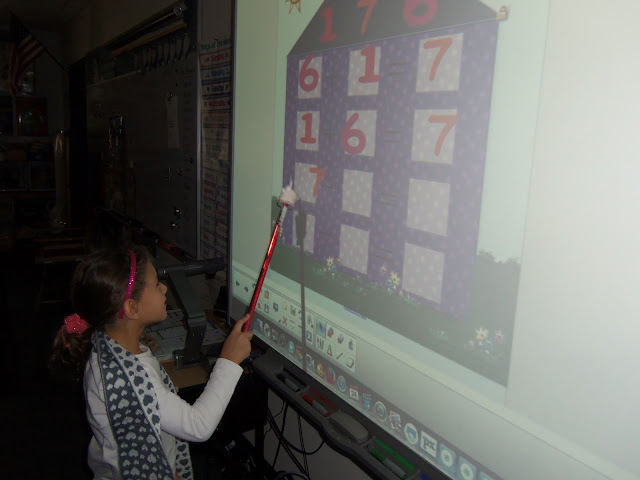We had a lot of fun designing our pumpkin. Later on, we wrote a description about our pumpkin. At our Open House Monday the 31st (8:10-8:40) you'll have to see if you can match our description to our pumpkin! See you on the 31st!
Glencoe Understanding Psychology: Online Textbook Help /
Psychology Courses Chapter 8 / Lesson 8
Transcript What Are Fine Motor Skills?
Fine motor skills are achieved when children learn to use their smaller muscles, like muscles in the hands, fingers, and wrists. Children use their fine motor skills when writing, holding small items, buttoning clothing, turning pages, eating, cutting with scissors, and using computer keyboards. Mastery of fine motor skills requires precision and coordination.
Fine motor skills develop after gross motor skills, which control actions like throwing and kicking balls, as well as walking and jumping. Gross motor skills utilize larger muscle groups and require less precision.
How Do We Help Children Develop Fine Motor Skills?
Practice, practice, practice. In most cases of fine motor skill development, practice does, in fact, make perfect. Some ways to develop these skills are having children do the following activities:
Pop bubbles on bubble wrap with just the index finger and thumb.
Use an eyedropper to add food coloring to batter with just the index finger and thumb.
Finger painting
Puzzles
Video games
Trace shapes or letters
Legos or building blocks
These activities focus on smaller muscle groups. Using the same muscles can help children develop muscle memory, which is when repetition of one action allows that action to be performed almost automatically without much effort. For example, pressing the correct buttons on video game controllers can be difficult the first few tries. But after playing the game a few times, we tend to master the buttons on the controller. Whether or not we can master the video game itself is a different story, but it does become second nature to press certain buttons to run or jump in the game.
Notable Accomplishments in Fine Motor Skill Development
Two popular terms that come up with learning about fine motor skills in children are fist grip and pincer grip. An example of a fist grip is when children use their whole hand and wrap it around a pencil to write their names. A pincer grip refers to the pinching muscles. Eventually, most children learn to use a pencil with their thumb and one or two fingers, which indicates that they have developed the pincer grip. When it comes to terminology for this lesson, grip and grasp are interchangeable.
I'll leave you with these jokes! ENJOY!
What is a scarecrows favorite fruit? — STRAW-berries.
Why did the witches cancel their baseball game? — They couldn’t find their bats.
How do you make a witch itch? — Take away the W
How do you make a skeleton laugh? — Tickle its funny bone.


























































